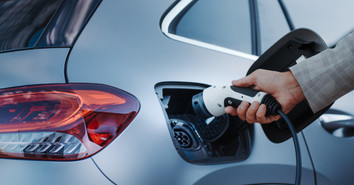The global energy landscape is undergoing a profound transformation, driven in large part by the rapid adoption of electric vehicles (EVs). While EVs promise to reduce greenhouse gas emissions and combat climate change, their growth is also disrupting traditional energy markets, particularly in relation to oil demand.
The ripple effects on oil production, consumption, and prices are becoming increasingly evident, as more countries set ambitious targets for phasing out internal combustion engines and as advancements in battery technology make EVs more accessible. This blog explores the global shift toward electric vehicles and oil demand, examining how the rise of electric cars is reshaping the future of energy and the challenges and opportunities it presents for industries and policymakers worldwide.
The Electric Revolution Begins
The automotive industry stands at a pivotal moment as electric vehicles transform transportation systems worldwide. Major manufacturers now invest billions of dollars in electric vehicle technology, signaling a fundamental shift in mobility. Governments across continents implement aggressive policies to accelerate electric vehicle adoption and reduce carbon emissions. This transformation represents more than technological advancement; it challenges decades of oil-dependent transportation infrastructure.
Understanding Oil’s Dominance in Transportation
Transportation sectors historically consumed approximately 60 percent of global oil production, making vehicles the most significant petroleum demand driver. Internal combustion engines powered nearly every car, truck, and motorcycle for over a century of automotive development. Oil companies, along with lubricant wholesale distributors, built extensive refining and distribution networks to meet gasoline, diesel fuel, and lubrication requirements for transportation needs. This symbiotic relationship between oil, lubricants, and transportation created one of the world’s most valuable economic partnerships.

Electric Vehicle Market Growth Accelerates
Electric vehicle sales demonstrate exponential growth patterns that exceed most industry predictions and market forecasts annually. Norway leads global adoption rates, with electric vehicles representing a large percentage of new car sales. China dominates electric vehicle production volumes, manufacturing millions of battery-powered vehicles for domestic and export markets.
European Union regulations mandate significant emissions reductions, driving consumers toward electric alternatives and away from combustion engines. For example, a family in Germany may now choose an electric SUV over a diesel model to comply with new emissions rules while enjoying lower operating costs.
Policy Frameworks Drive Change
Government incentives significantly influence consumer decisions regarding electric vehicle purchases and traditional vehicle replacements nationwide. Tax credits reduce electric vehicle costs, making battery-powered cars financially competitive with gasoline-powered alternatives for consumers. Emissions standards force manufacturers to develop cleaner technologies or face substantial financial penalties from regulatory authorities. Many countries are announcing plans to ban the sale of internal combustion engines within the next two decades.
Infrastructure Development Supports Adoption
Charging station networks expand rapidly across urban areas, highways, and residential neighborhoods to support growing electric vehicle populations. Fast-charging technology reduces charging times from hours to minutes, addressing consumer concerns about electric vehicle practicality. Workplace charging stations enable employees to charge vehicles during work hours, eliminating range anxiety concerns. Home charging solutions provide convenient overnight charging options for electric vehicle owners with residential parking access.
Battery Technology Advances Transform Markets
Lithium-ion battery costs decreased significantly during the past decade, making electric vehicles economically viable. Energy density improvements allow electric cars to travel longer distances on a single charge, matching gasoline vehicle capabilities. Solid-state battery research promises even greater energy storage capacity and faster charging speeds for future applications. Battery recycling programs develop sustainable solutions for managing end-of-life electric vehicle components and materials recovery.

Traditional Automakers Embrace Electric Transition
Legacy automotive manufacturers are allocating substantial resources to electric vehicle development, which involves abandoning decades of expertise in combustion engines. General Motors commits to producing only electric vehicles by 2035, representing a complete transformation strategy. Ford invests billions in electric truck production, targeting commercial and consumer markets with battery-powered alternatives. Volkswagen develops dedicated electric vehicle platforms, designing cars specifically for battery-powered propulsion rather than adapting existing designs.
Economic Implications for Oil-Producing Nations
Countries dependent on oil exports face significant economic challenges as transportation demand shifts toward electricity-powered alternatives. Saudi Arabia diversifies its economy through Vision 2030, reducing dependence on petroleum revenues and developing alternative industries. Russia explores new markets for oil products as traditional automotive fuel demand potentially declines permanently.
Venezuela confronts additional economic pressures as global oil demand patterns shift away from transportation applications. For example, Saudi Arabia’s investment in tourism and renewable energy projects highlight how oil producers must adapt to maintain long-term economic stability.
Supply Chain Transformations Emerge
Electric vehicle manufacturing requires different materials and supply chains compared to traditional automotive production processes and systems. Lithium, cobalt, and nickel become critical materials for battery production, creating new resource dependencies and geopolitical considerations. Rare earth elements, essential for electric motors, concentrate mining operations in specific geographic regions with limited alternatives. Traditional automotive parts suppliers must adapt their business models to avoid obsolescence, as electric vehicles require fewer components.
Environmental Impact Assessment
Electric vehicles produce zero direct emissions, reducing urban air pollution and improving public health outcomes significantly. However, electricity generation methods determine the overall environmental impact of electric vehicle adoption in different regions and countries. Coal-powered electricity grids may limit the ecological benefits of electric vehicles until renewable energy sources increase substantially. A life-cycle analysis includes battery production environmental costs, though these typically offset within several years of operation.
Consumer Behavior Shifts
Purchase decisions increasingly consider environmental impact alongside traditional factors, such as price, performance, and reliability, when selecting vehicles. Younger generations demonstrate stronger preferences for electric cars, indicating sustained long-term demand growth for battery-powered transportation. Range anxiety concerns diminish as charging infrastructure expands and battery technology continuously improves range capabilities. Total cost of ownership calculations favor electric vehicles in many markets due to lower maintenance requirements.
Future Projections and Market Outlook
Industry analysts project electric vehicles will represent 30 percent of global car sales by 2030, fundamentally altering transportation. Autonomous vehicle development focuses primarily on electric platforms, potentially accelerating adoption through shared mobility services and applications. Commercial vehicle electrification begins with delivery trucks and buses, extending electric adoption beyond personal transportation markets. Aviation and shipping industries explore electric and hydrogen alternatives, though implementation timelines remain longer than automotive applications.
The transition toward electric vehicles represents one of the most significant industrial transformations in modern history. This global shift toward electric vehicles and oil challenges established oil markets while creating opportunities in the renewable energy and battery technology sectors. Success requires coordinated efforts between governments, manufacturers, and consumers to build sustainable transportation systems. The pace of this transformation will ultimately determine how quickly oil demand patterns change globally.

